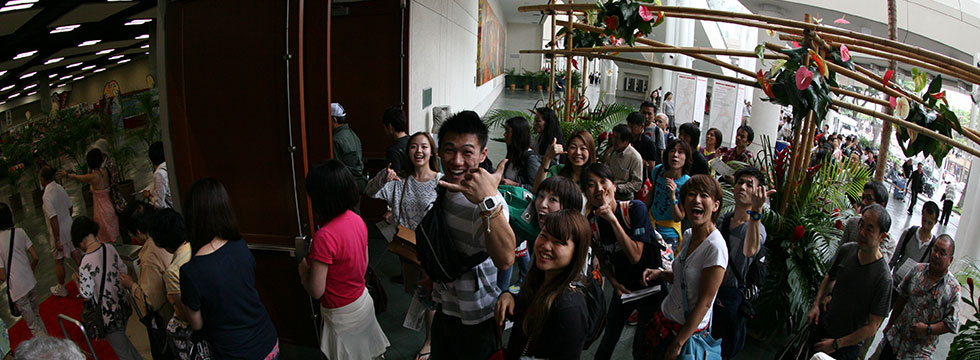25 Communication Styles Examples 2025
June 17, 2025 9:47 pm Leave your thoughtsCommunication Style Quiz
Understanding the various Types of Communication Styles is vital for effective personal and professional interactions. Each style, from Assertive to Directive, plays a unique role in shaping our communication, influencing how messages are conveyed and received. Mastering these styles enhances our ability to adapt to different situations, leading to more successful and meaningful exchanges. Embracing the diversity of these communication styles not only enriches our interactions but also contributes to our overall communication competence. Exploring the various Types of Communication Styles is key to understanding and improving how we interact with others. Each style has its unique approach and impact on interpersonal dynamics.
How Your Communication Type Can Affect Your Message
Clear communication can also produce a sense of mutual respect among co-workers, including an appreciation for others’ differences, beliefs, and cultures. This situation can lead to fewer workplace conflicts and increased harmony. As an Intuitive communicator, you like the big picture, you avoid getting bogged down in details, and you cut right to the chase. You don’t need to hear things in perfect linear order but prefer instead a broad overview that lets you easily skip right to the end point. For example, some people, like Functional communicators, will tell you things step-by-step (they start with A, then go to B, then C, then D, then E, etc.). Depending on the people and environment we may communicate in a different way then in other situations.
“If instructions and the nature of the task are not clear to those (working on) the project, there will be problems,” Owston said. “It is important for the leader of the project to clearly communicate the goals and outcomes of the project. SMART goals are one tool that can help in this regard.” “Active listening means listening not just with our ears but also with our eyes and with our heart,” said LaFave.
One big plus of having a Functional communication style is that your communication generally hits all the details and nothing gets missed. When you’re on a team, people will often turn to you to be the implementer, because they have confidence in your love of process and detail. Passive-aggressive communication can be damaging to relationships and can create a toxic environment. It’s important to address conflicts and issues directly and honestly, and to find constructive ways to express your feelings and needs without resorting to passive-aggressive behavior. “Interpersonal communication is multifaceted,” said Dr. Jim Owston, a communication instructor at SNHU. According to Owston, it’s hard to define someone by just one communication style.
Be sure that any communication style you implement reflects your organisational culture. If not, you will encounter adoption resistance and even struggle to attract candidates who possess the requisite skillset to help your business thrive. Truly effective communication in the workplace doesn’t rely solely on promoting one style primarily. Regardless of where you work, the sector, organisation, or department, will balance a full range of personalities. Moreover, they are great at recognising and adapting to contextual situations, such as communicating Ukrainiancharm with diverse types of people and motivating colleagues when needed.
Make Sure It Reflects Organisational Culture
Their thorough nature will make sure that the project runs successfully. They can find it difficult to effectively express themselves, and want to avoid confrontation at all costs. This can directly lead to their good ideas never being heard, or for miscommunications to come up. An aggressive communicator behaves as if their contribution to the conversation is more important than anyone else, and the content of their message is often lost because of the tone of their delivery. Assertive communicators tend to have naturally high self-esteem, and they do not veer into passive or aggressive communication. Casual Communication Style is informal and relaxed, commonly used in everyday conversations.
You tend to be a good listener and diplomat, you can smooth over conflicts, and you’re typically concerned with the health of your numerous relationships. If there’s any communicator who’s likely to ask about someone’s personal life, it’s the Personal communicator. As a Functional communicator, you like process, detail, timelines and well-thought-out plans. You like communicating in a step-by-step fashion so nothing gets missed. By contrast, there are some people, like the Intuitive communicators, who like to skip all the detail and just jump right to the end.
On one end of the spectrum, we might find the assertive style, characterized by clear, direct communication. This style allows individuals to express their thoughts and needs in a respectful way. Take, for instance, a manager stating succinctly that a project deadline has been brought forward and explaining the reason behind this change.
- Look at the statements and think about which one of them applies the most to you.
- Those who use assertive communication use language to advocate for their ideas without resorting to aggressive language or passive behaviors.
- You don’t get stalled by needing too many details, and you’re comfortable with big ideas and out-of-the-box thinking.
“However, it is important to consider the contexts, the relationships and the purposes of interactions when identifying these styles,” she said. For example, some people might lean towards an assertive style, whilst others prefer a more passive approach. Recognizing these differences and adapting one’s communication style accordingly can enhance mutual understanding and cooperation. Creative conflict, a constructive disagreement for finding a third solution, can only arise when communication is optimized. While understanding Chinese communication styles can feel like navigating uncharted waters, the key is cultural sensitivity. A good organisation recognises this and cultivates a diverse workplace culture – one that appeals to people with a range of communication styles.
In contrast, silence holds significant meaning in Chinese communication. It conveys thoughtfulness, respect, or disagreement without confrontation. As a result, communication often avoids direct confrontation or criticism.
The people-oriented communication style prioritizes building and nurturing relationships and tends to be more sensitive to the feelings of others (Paxson, 2018). For example, a scientist presenting research findings in a methodical, factual manner demonstrates an analytical communication style. Whilst this style can be exceptionally useful in data-driven fields, it may not fully account for human emotional perceptions or social nuances (Watson & Hill, 2015). People with an expressive communication style tend to be enthusiastic, affectionate, and use a lot of nonverbal cues, like facial expressions and gestures. Passive-aggressive communication is a style in which individuals digress their feelings and disapproval indirectly rather than openly addressing them (McDougall & Pollard, 2019). Communication styles vary greatly, including on account of the context in which you’re communicating, the cultural context, and your personality.
Aggressive communicators frequently express their thoughts and feelings, often in a heated or even enraged manner. They often react before thinking and can have an abrasive persona which decreases workplace productivity. Although they might come off as brash in certain circumstances, aggressive communicators can command respect in the workplace, especially in competitive environments. Thus, assertive communicators generally have fewer conflicts and lower stress levels than people with other communication styles because they aren’t bottling anything up or communicating in ineffectual ways.
From sending a quick text to chatting with a friend over coffee, you are interacting with the people around you all the time. Whether it’s verbal or nonverbal, communication makes up a big part of your life. This style involves demonstrating genuine interest in team members’ lives, listening effectively, and encouraging open discussions. A leader practicing this style might regularly check on their team’s well-being and motivate them through recognition and appreciation (Long et al., 2021).
If you respond to an aggressive communication style by employing similarly aggressive communication, that will only inflame the conflict. Ironically, if you tell an aggressive communicator to “calm down” all that happens is they get even angrier. But when you say “Wow, I think I need a second here,” you’ve essentially told that person that their utterance is so angry and outside the norm that you literally need to pause in order to absorb it.
In terms of specific industry advancements, recent insights from the Global Web Index highlight a significant shift in consumer behavior. Over 90% of internet users engage with instant messaging apps daily, indicating a preference for real-time, immediate communication. Likewise, emerging trends show that video content on platforms like Zoom and Teams is preferred for professional meetings, as they offer a more personal touch compared to voice calls. This shift is particularly evident among millennials and Gen Z, whose digital fluency drives the demand for interactive and engaging communication mediums. The upside of a functional communicator is their detail-oriented mind will be sure not to miss any important steps. They find it easy to focus on implementing projects and have a native understanding of what it will take to accomplish.
These three concepts are foundational when it comes to good management and creating a successful business environment. These styles are derived from the behavioral styles outlined by American psychologist William Moulton Marston in his book “Emotions of Normal People”. “We all carry with us implicit biases that we may or may not be aware of,” said LaFave. “Before we even begin speaking, we form impressions of another person based on our initial observations, past experiences and even biases that we may or may not be aware of.”
However, it is not a substitute for professional behavioral health advice, diagnosis, or treatment. Whenever you’re communicating with your prospects or customers, you should thoroughly address all your issues. These issues usually are the ones that customers have asked, and most businesses or business workers fail to provide complete answers to the inquiries. This may not leave a good impression of the organization on the customers. However, the tone should be used carefully since humor is usually easy to misinterpret, and you may knowingly or unknowingly end up hurting someone’s feelings.
And some might use their interaction type as an excuse for their misbehavior, rudeness, and even lack of negotiation skills. However, actively listening to someone is different from waiting for them to finish, so you can continue talking. You should avoid passive listening to improve your Communication Style. Valuing emotional language more than the spoken one means you have a Personal Interaction Type.
If you exhibit passive communication, you might often agree with others, even when you don’t genuinely agree, to avoid conflict. Although this style can contribute to a more peaceful environment, it may also lead to frustration and unaddressed issues. To improve your communication, practice asserting yourself and expressing your thoughts and feelings effectively. People who adopt an aggressive communication style tend to be forceful and command more respect. However, this communication style should not be cultivated to the detriment of interpersonal relationships. There are several communication styles in the workplace that shape how information is conveyed.
Categorised in: How to
This post was written by vladeta



